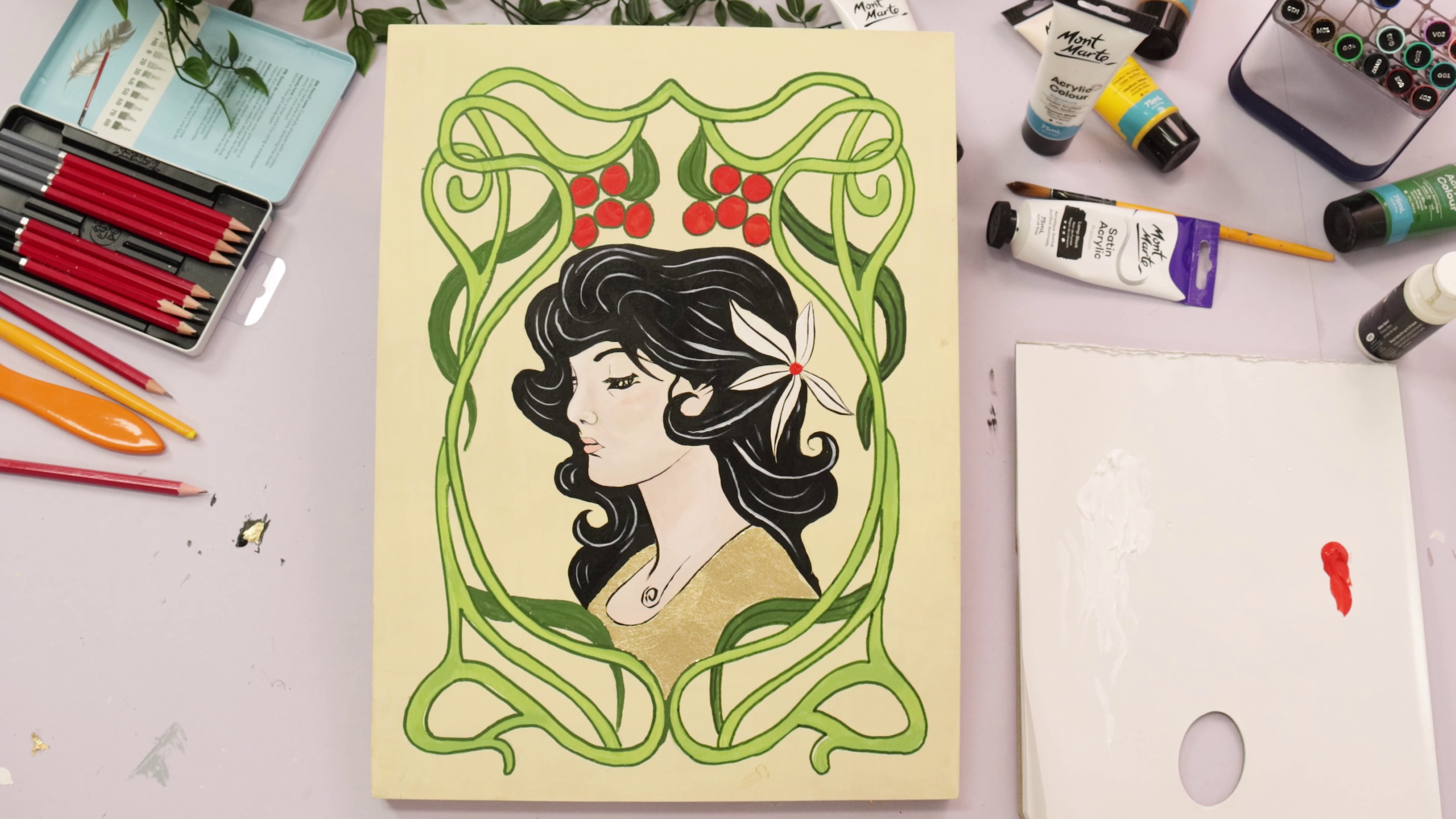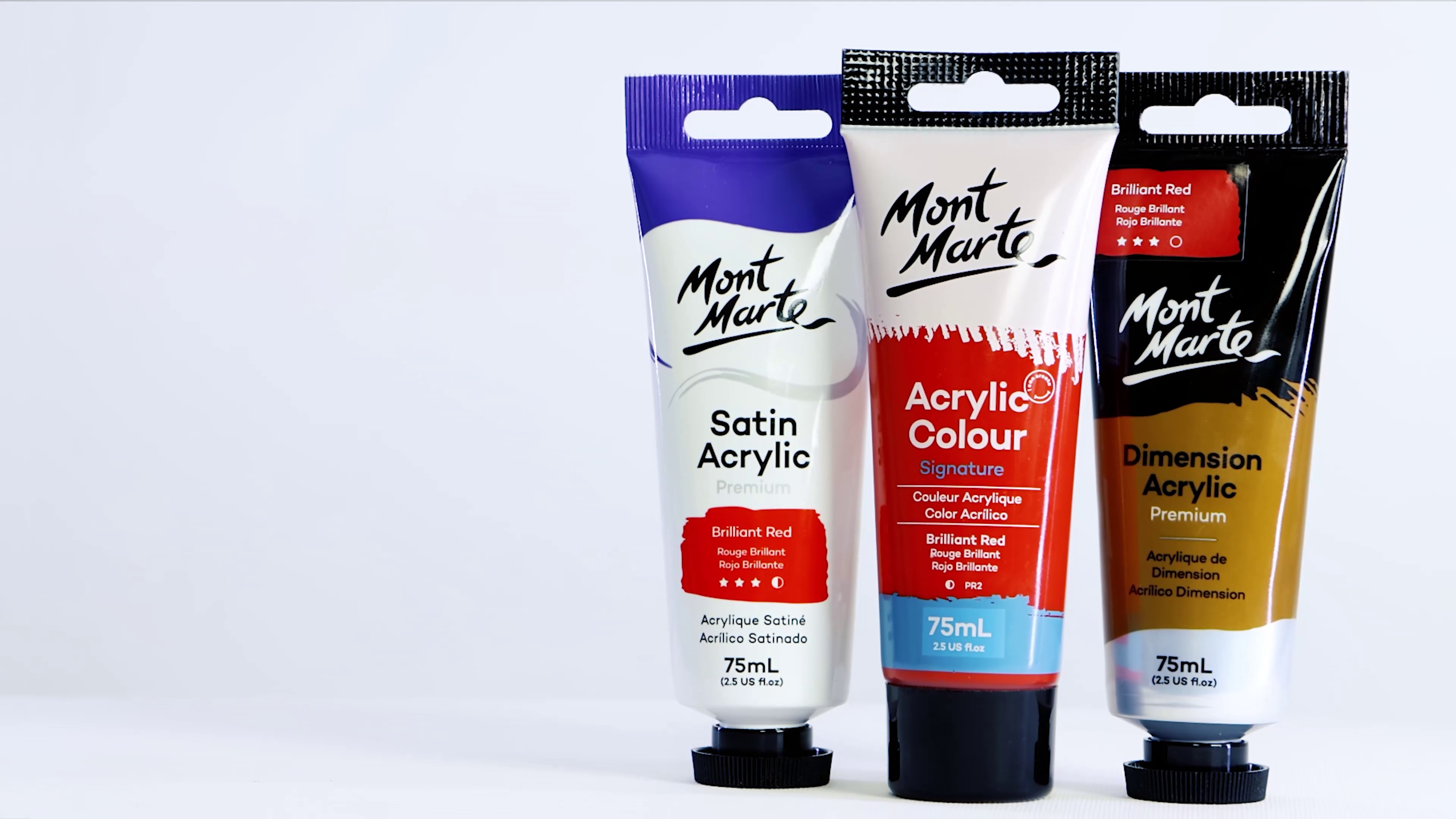Whether you’re looking to switch from acrylics to oils or you’re just wondering how each medium stacks up, in this guide we’re taking a look at oils vs acrylics, to solve the age old debate, which is better acrylic or oil paint?
What to expect:
We all have to start somewhere, so let’s take a look at what we can expect from each medium. Acrylic paints have a creamy texture, and often range from a satin to a matte finish. Once dry, most have a rather matte finish compared to oil paints, but we’ll get to that soon.
Acrylic paints have a bit of a superpower compared to oil paints, they’re water-based but waterproof once dry. This is because acrylics are made with a binder of fine acrylate resin and water. This also makes them fast drying and permanent, meaning you can work almost anywhere with these paints. Take an acrylic painting outside and you won’t have to worry about the rain! You can also use most brushes with acrylics; if you’re a beginner, check out synthetic or taklon.
Oil paints, on the other hand, are pigment in a binder of linseed or poppy oil. This means you can expect a soft, buttery texture that’s thick and rich in colour. Oil paints dry to a satin or matte finish with a sheen. The downside is that oil paints take longer to dry and can become brittle with age because of the oil inside them.
You’ll probably know from cooking that oil and water don’t get along, so you won’t be able to dilute your oil paints with water either, you’ll need to use a chemical solvent like turpentine and work in a well-ventilated area. Because of the thick paint, you’ll also need to pay attention to which brush you use. We reckon hog bristle, sable and taklon brushes are best for oil paints.
Key points:
- Oil paints are richer in colour than acrylics and have a slight sheen to them.
- Acrylic paints dry quickly, oil paints take longer.
- Acrylic paint is flexible and waterproof once dry.
- Oil paints can become brittle with age, but you can help prevent this.
- With oil paints, you’ll need to work with chemical solvents and work in a well-ventilated area.
- You’ll need to use either a hog bristle, sable or taklon brush with oils. Acrylic paints can be used with most brushes.
2. Compatibility
The good news is that you can fix a few of these disadvantages with mediums. Acrylic paints are compatible with acrylic mediums like impasto, moulding paste and gel mediums. This means you can slow down the drying time of your acrylics with a gel retarder or dilute your acrylic paints for pouring or glazing with a medium. Plus, because acrylic paint is quite flexible, it can be watered down or even used in an air brush.
Oil paints are compatible with chemical solvents like linseed mediums and turpentine. You’ll also need to use these mediums to clean brushes and dilute the paints. While mediums are great for acrylic painting, they’re not necessary and you could still paint an artwork well without them, however, mediums are essential for oil painting. Remember, oil paints can crack and become brittle over time, so painting ‘fat over lean’ is an important technique to learn. This is where you paint the lightest layer first then add more oil as you layer.
When it comes to palettes, you can use pretty much anything for acrylic painting. But when it comes to oil painting, you’ll need to use either a ceramic tile or a wooden palette. Using a plastic palette with oil paints will only damage it as soon as you reach for the solvents, so best to avoid this.
Key points:
- Acrylic mediums can help control the flow and thickness of the paint.
- Using a medium can slow down the fast drying time of acrylics.
- You can use a range of paint palettes with acrylics.
- Mediums are essential for oil painting.
- Oil paint cracking can be prevented with a medium.
- Wooden palettes or ceramic tiles are required for oil paints.
3. Vibrancy
Both paints are quite vibrant, but if there was a winner, it would be oil paints for this category. Because of their thick oils, these paints have a slight sheen to them. Though acrylic paints can dry to various finishes, side-by-side, you might notice a slight gloss to the oil paints where the light reflects off the paint. Sure, acrylic paints can imitate this but often they look slightly duller once they’ve dried. Acrylic paint can also have a subtle difference in colour (as the paint oxidises) from the wet paint to the dry paint.
Key points:
- Both paints are vibrant, but oil paints have more of a sheen to them, because of the oil.
- With acrylics, there may be a slight colour change from the wet paint to the dry paint.
4. Time
So we’ve painted a masterpiece, now it’s drying time. Acrylic paints dry incredibly quickly, they can take around 10 – 30 minutes to touch dry and about 1 – 2 weeks to cure. Meaning, you can varnish your artwork in no time! Once acrylic paints have dried, the colour won’t change over time and it’s permanent, so you can roll up an artwork without worrying about it flaking or wrinkling.
The oil paint drying time take a bit longer because this medium goes through a different drying process. Oil paints will be touch dry within two days and curing will take a few months, so you won’t be able to varnish your work for a while.
As oil paints harden as they dry, this can cause the paints to yellow or crack over time. Different colours can also have different levels of binder in them and that means, they can take longer to dry. Titanium White and Yellow Ochre can take up to eight days to touch dry, while Raw Umber and Burnt Sienna can take around two days to touch dry.
Whereas all acrylic paints take around the same time to dry - it won’t vary based on what colour you’ve used. But this isn’t a bad thing, it just means you’ll have a lot longer to work on an oil painting than an acrylic painting, so you can come back to your work later.
Key points:
- Acrylic paints are permanent. Once dry, the colour won’t change over time.
- Oil paints can yellow and crack over time, some colours may change over time.
- Acrylic paints dry very quickly.
- Oil paints take a lot longer and drying time depends on the colour used.
- Acrylic is touch dry within 30 minutes, curing after 1 – 2 weeks.
- Oil paint is touch dry within two days, curing after a few months
5. Clean up
Cleaning up acrylic paint is quite easy. You can rinse palettes and brushes with water or leave palettes to dry and peel the residue off. Do NOT rinse acrylic paint down the drain, check out our tips for how to dispose of acrylic paint thoughtfully instead.
If you don’t mind taking a little longer to clean up, you’ll probably like oil paints. This medium needs a few extra steps for cleaning though. Use turpentines, safflower oil and an old rag/ paper towel to remove paint from brushes and from palettes. For more on how to clean your oil paint brushes, check out this how-to.
To keep yourself and others safe, don’t leave chemical solvents unattended.
Key points:
- Acrylic palettes and brushes can be rinsed with water, or left to dry and peeled off.
- Oil paints need turpentines, safflower oil and paper towels to remove paint from brushes and from palettes.
- Do not pour acrylic paint down the drain.
- Do not leave chemical solvents unattended.
Acrylics may be easier to use, and they dry much quicker than oils, but there’s no denying the colour from oil paints is much richer than acrylics and you’ll get a lovely sheen from them.
When it comes to which is better acrylic or oil paint, there’s no clear winner. It really depends on how you work. If you don’t mind the wait or the extra cleaning steps, try oil painting. If you work in a small space or want more versatility in your creative session, try acrylics.
Looking for more on oil paints? Check out our guide to water mixable oil paint vs oil paint and see how these two types stack up. Or check out these 10 tips on oil painting for beginners.
Get started on your creative journey and check out our oil paints or acrylics here.
We hope that you feel inspired to create something new yourself. Try it out and #montmarteart or tag us @montmarteart on Instagram or Facebook, we’d love to see what you create.





























